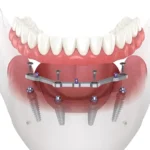
Small Cell Lung Cancer and Radiation Therapy: Treatment Options and Side Effects
Small cell lung cancer (SCLC) is a type of lung cancer that requires comprehensive treatment for the best outcomes. Among the various treatment options available, radiation therapy plays a crucial role in managing SCLC. If you’re seeking Lung Cancer Treatment in Noida, it is essential to consult with the Best Oncologist in Noida for personalized advice and treatment options. In this blog, we will explore the treatment options and side effects associated with radiation therapy for small cell lung cancer.
Understanding Small Cell Lung Cancer (SCLC)
SCLC is an aggressive form of lung cancer that accounts for approximately 10-15% of all lung cancer cases. It is strongly associated with smoking and is more common among heavy smokers. Other risk factors include exposure to certain chemicals and a family history of lung cancer. Common symptoms of SCLC include persistent cough, shortness of breath, chest pain, and unintentional weight loss. Diagnosis involves imaging tests, such as X-rays and CT scans, as well as biopsies to confirm the presence of cancer cells.
Treatment Options for Small Cell Lung Cancer
- Surgery: Unlike non-small cell lung cancer, SCLC is rarely treated with surgery alone. Surgery may be considered for early-stage SCLC in select cases, where the cancer is limited to a single lung and has not spread to nearby lymph nodes.
- Chemotherapy: Chemotherapy is a systemic treatment that uses powerful drugs to destroy cancer cells throughout the body. It is the primary treatment for SCLC and is often combined with radiation therapy for better outcomes.
- Radiation Therapy: Radiation therapy involves the use of high-energy radiation to target and kill cancer cells. It can be used as a primary treatment for SCLC, especially in cases where surgery is not feasible. Radiation therapy can also be administered after surgery to eliminate any remaining cancer cells or to control the disease when it has spread to other parts of the body.
- External Beam Radiation Therapy (EBRT): This is the most common type of radiation therapy for SCLC. It delivers radiation from a machine outside the body, precisely targeting the tumor while minimizing damage to surrounding healthy tissues.
- Proton Therapy: Proton therapy is a more advanced form of radiation therapy that uses protons instead of X-rays to deliver radiation. It can be beneficial in reducing radiation exposure to healthy tissues, especially for tumors located near critical structures.
- Stereotactic Body Radiation Therapy (SBRT): SBRT delivers high doses of radiation to small tumors in a few treatment sessions. It is particularly effective for treating SCLC that has spread to the lungs or other parts of the body.
Side Effects of Radiation Therapy
Radiation therapy can cause both short-term and long-term side effects. The short-term side effects usually subside after treatment, while some long-term effects may persist. It is important to note that not all individuals experience the same side effects, and their severity varies from person to person.
Common short-term side effects of radiation therapy for SCLC include fatigue, skin reactions (such as redness or irritation), hair loss in the treatment area, nausea, vomiting, and difficulty swallowing. These side effects can be managed with appropriate medical interventions and support from healthcare providers.
Long-term side effects may include radiation pneumonitis (inflammation of the lungs), lung fibrosis (scarring of lung tissue), heart complications, and an increased risk of developing secondary malignancies. Regular follow-up care and monitoring are essential to detect and manage any potential long-term side effects.
Managing and Minimizing Side Effects
To manage the side effects of radiation therapy, supportive care is crucial. This may include the use of medications to alleviate symptoms, such as anti-nausea drugs or pain medications. Nutritional support from a registered dietitian can help maintain proper nutrition during treatment. Emotional and psychological support, including counseling or support groups, can also be beneficial in coping with the emotional challenges associated with cancer treatment.
Conclusion
Radiation therapy is a critical component of the comprehensive treatment approach for small cell lung cancer. It can be used as a primary treatment or in combination with surgery and chemotherapy. While radiation therapy has side effects, they can be managed with appropriate supportive care. If you are seeking Lung Cancer Treatment in Noida, consult with the Best Oncologist in Noida for personalized guidance and treatment options. Remember, early detection and timely treatment offer the best chances of successful outcomes in small cell lung cancer.
Frequently Asked Questions
- Can radiation therapy cure small cell lung cancer? Radiation therapy can be curative for early-stage SCLC and can help control the disease when it has spread to other parts of the body. However, the potential for cure depends on several factors, including the stage of the cancer and the overall health of the individual.
- How long does radiation therapy for SCLC last? The duration of radiation therapy for SCLC varies depending on factors such as the stage of the cancer, the treatment plan, and the individual’s response to therapy. Generally, radiation therapy for SCLC is administered daily over several weeks.
- Is radiation therapy painful? The actual process of receiving radiation therapy is painless. However, some individuals may experience discomfort or side effects associated with radiation therapy, such as skin reactions or fatigue. These can be managed with appropriate medical interventions.
- What are the alternatives to radiation therapy? Depending on the stage and characteristics of the cancer, alternatives to radiation therapy may include surgery, chemotherapy, targeted therapy, or immunotherapy. The best treatment approach is determined based on individual factors and a comprehensive evaluation by an oncologist.
- Can radiation therapy be combined with other treatments? Yes, radiation therapy is often combined with chemotherapy in the treatment of small cell lung cancer. This combination is known as chemoradiation and can improve treatment outcomes compared to either therapy alone.


















